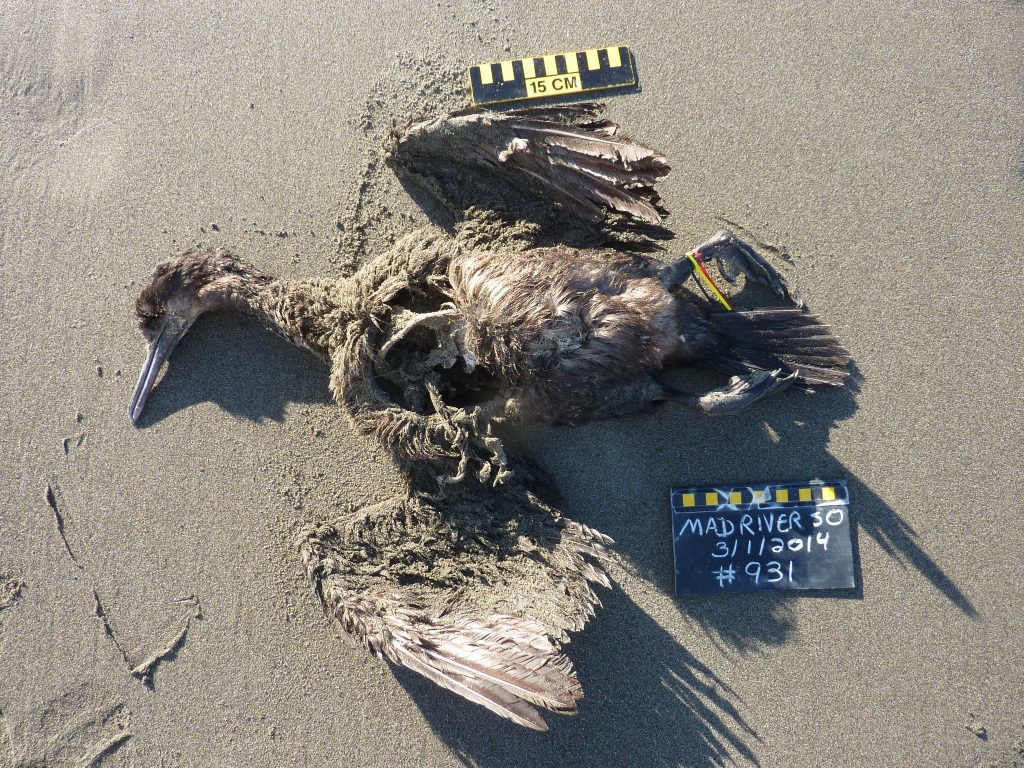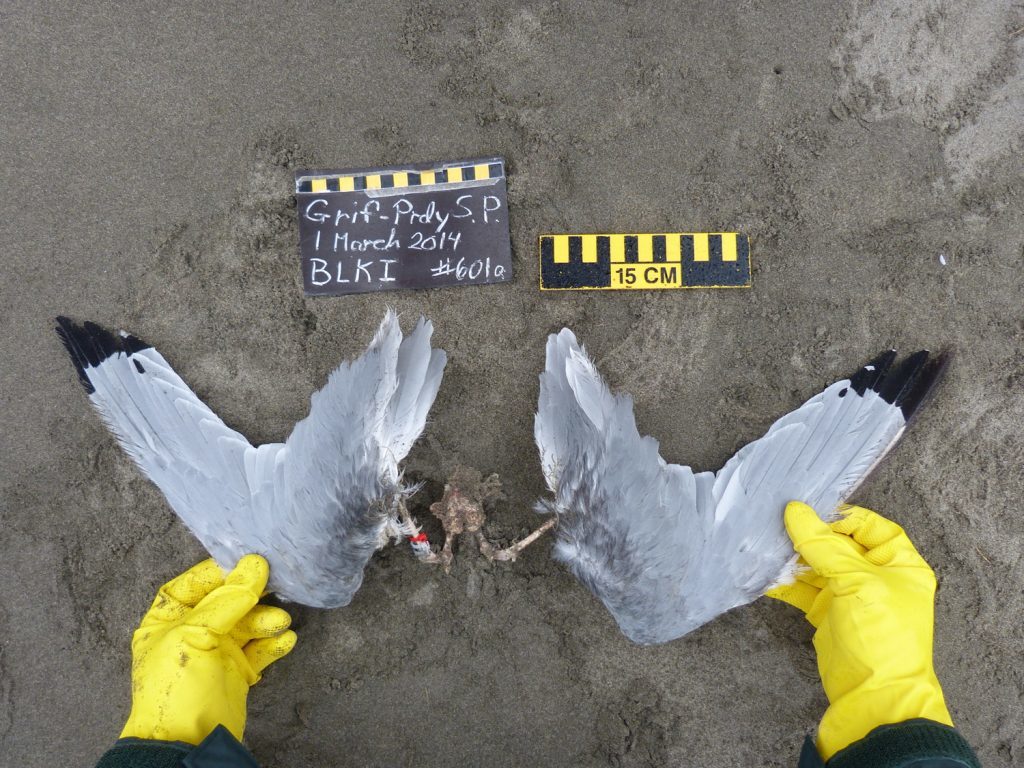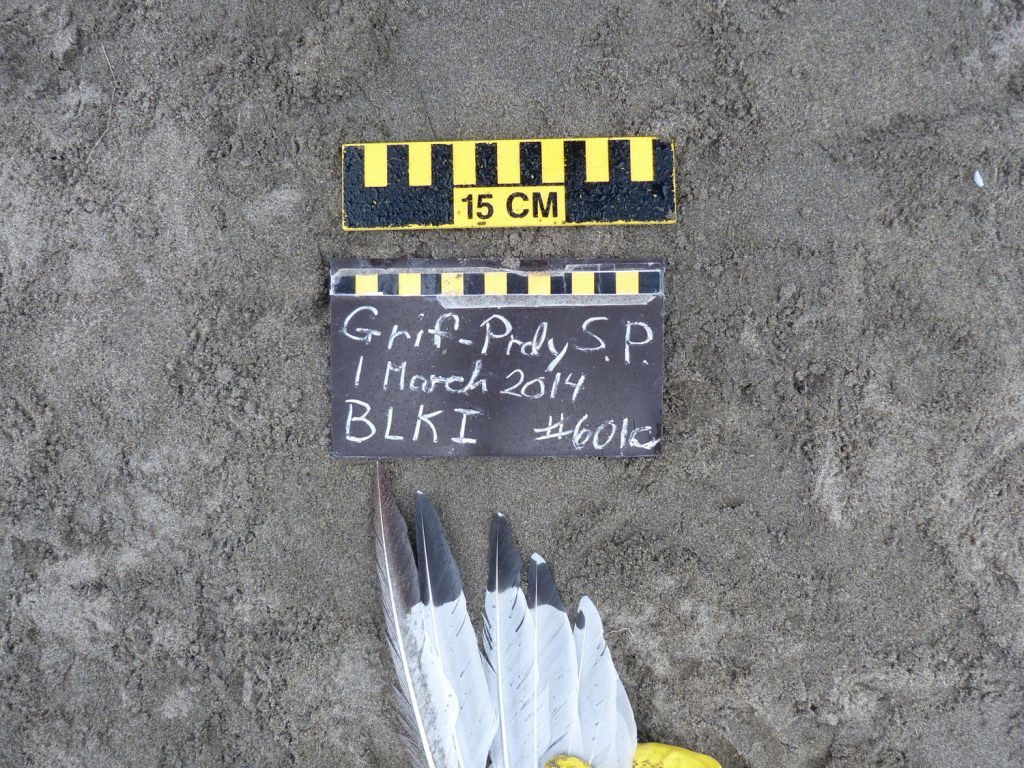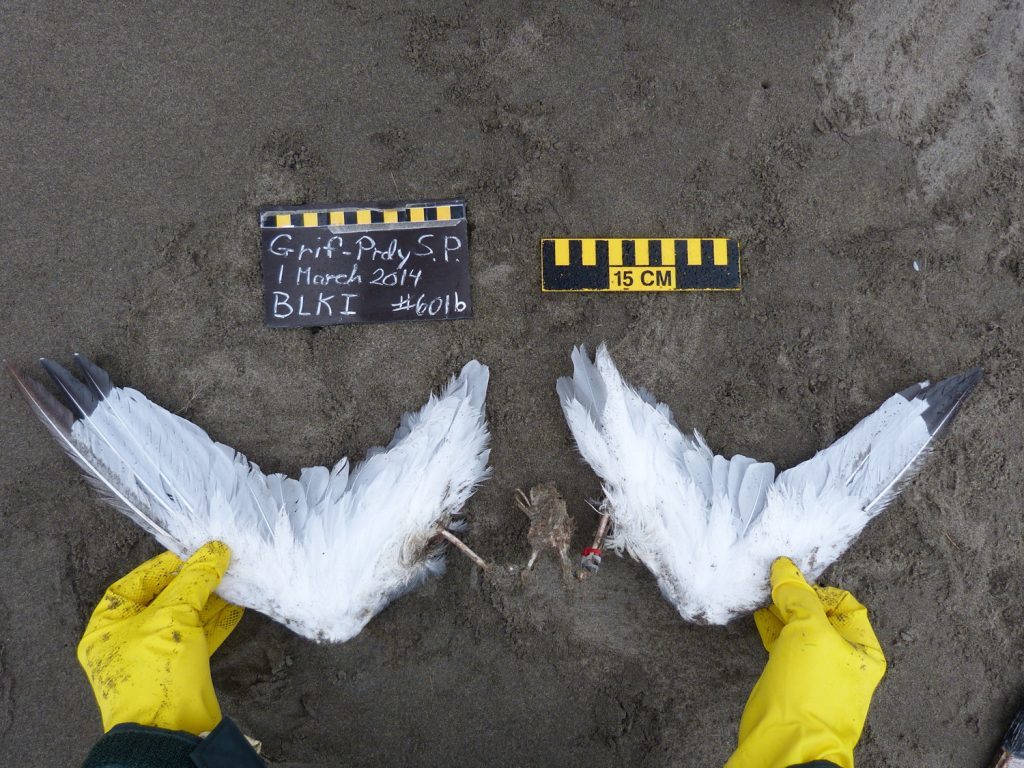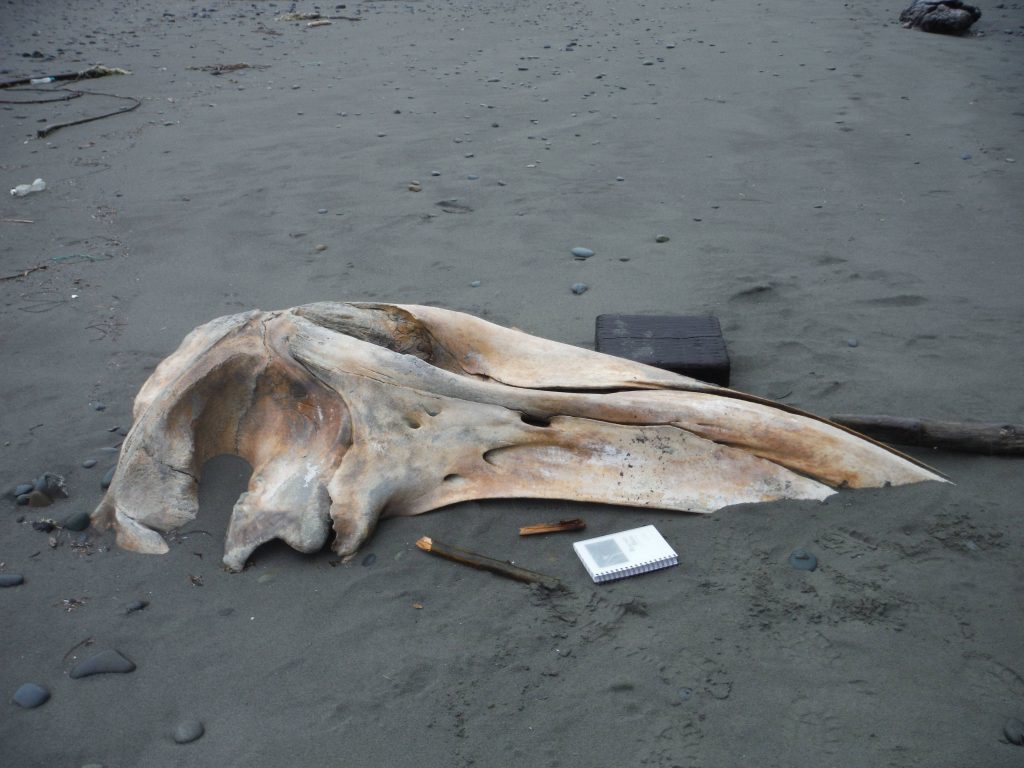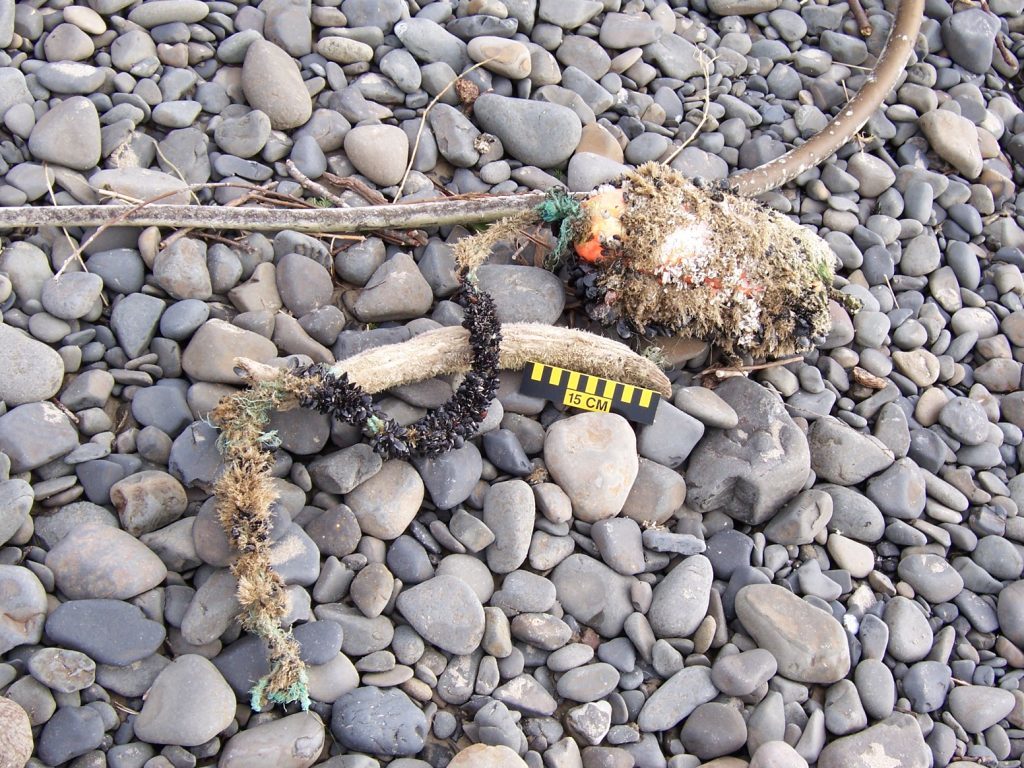Sara and Peter at Mad River South (CA) just found this last week. Let’s take a look at the feet. Webbed, completely webbed, four webbed toes: Pouchbills. Since the bill is less than 10 cm and the wing chord is less than 35 cm, we know we are looking at a Cormorant. If we take a closer look at the wings, we’ll notice that the outer primaries cut out on the leading edge. We can tell this is a Brandt’s Cormorant because the bill is dark and the chin feathers are tan (Pelagic Cormorant, Double-crested Cormorant, or Red-faced Cormorant).
Time for some wing practice! Take a look at these great photos from Terry and Carl at Griffith’s Priday State Park on the South Coast of Washington.
Here we have gray upperwings with contrasting dark tips. Using either wing key (Alaska, West Coast), we check the upperwing for stripes – nope. Next, we turn to the primary feathers, noticing that some have white fingernails, but no windows (large white spots, not at feather tip). The inner primary plumage is gray, not white-tipped (Red-legged Kittiwakes – Alaska guide). With a wing-chord of 30 cm, this is a Black-legged Kittiwake.
Using the West Coast wing table, the 30 cm wing chord puts us in the “large” row. Our column is “gray mantle with white linings and black tips” – either a Black-legged Kittiwake or a Red-legged Kittiwake. Underside of primaries is more pale than the mantle – this is a Black-legged Kittiwake.
Tom found this Gray Whale skull on his first COASST survey at Steamboat Creek in Washington (beginner’s luck!). After checking in with colleagues at Cascadia Research Collective (thanks Jessie!), it’s likely be an adult gray whale (originally 12m!), initially found in 1991.
Here’s a crab buoy found by Joanna on Oregon Mile 309, covered or “biofouled” with mussels, barnacles, sponges, and algae. Did you know? It takes free swimming barnacle larvae (cyprids, more than 6 months old) a few hours-to-two weeks to settle onto natural or man-made surfaces.

